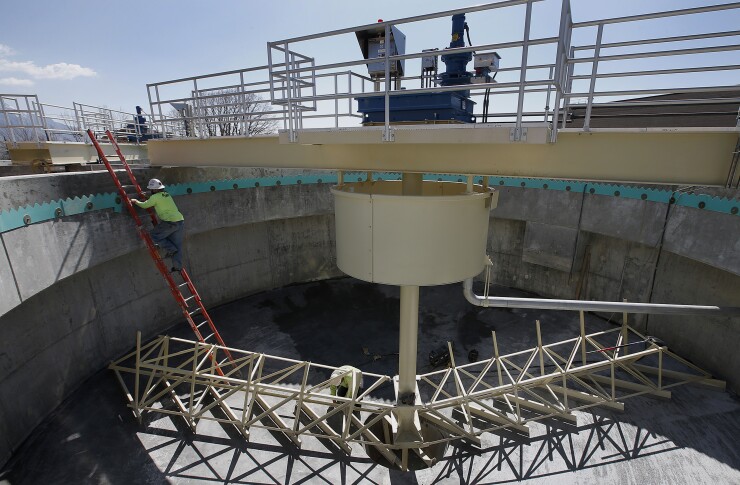WASHINGTON – President Trump's fiscal 2019 budget proposals to reduce funds for water infrastructure programs seem to run counter to his infrastructure plan and have left water, environmental, and state and local government groups disappointed.

The infrastructure plan that the president released on Feb. 12 proposed $14 billion to expand three major existing federal credit programs that provide low-cost loans or credit assistance -- the Water Infrastructure Finance and Innovation Act (TIFIA) that historically has been used for water projects, the Transportation Infrastructure Finance and Innovation Act (TIFIA) for highway projects and the Railroad Rehabilitation and Improvement Financing for rail projects.
The plan proposed that these programs be significantly expanded to cover other infrastructure needs as well as the ones already authorized.
WIFIA, for example, would be expanded to also provide assistance for flood mitigation, navigation and water supply projects as well as rehabilitation and cleanup of brownfield and Superfund sites. In addition, the requirement that WIFIA borrowers be community water systems would be eliminated.
A hugely popular program among state and local governments, WIFIA provides long-term low cost supplemental loans for regionally and nationally significant projects. The infrastructure plan proposed to "expand Water Infrastructure Finance and Innovation Act (TIFIA) funding and broaden program eligibility."
But the president's infrastructure plan did not propose or provide any source of funds for these programs to cover their expanded missions.
And the president proposed only $20 million for the WIFIA program for fiscal 2019 -- $10 million less than the program was provided in fiscal 2017. Fiscal 2019 does not start until Oct. 1 of this year.
Congress has still not finalized spending for fiscal 2018. Lawmakers are working on spending allocations for fiscal 2018, which began last Oct. 1 under a two-year budget deal that would increase spending by an additional $80 billion for defense $63 billion for non-defense discretionary programs. They face a March 23 deadline to finish their work.
"There are some potential challenges expanding WIFIA eligibility to the full extent the president called for in his budget proposal," said Tom Martin, communications director for the National League of Cities. "With brownfields, for example, there is no clear revenue stream to repay WIFIA loans."
Tommy Holmes, legislative director for the American Water Works Association, described the budget requests as “frustrating” given “all this talk of reinvesting in America’s infrastructure.”
But he also noted that so far Congress has not followed the president's budget requests for these programs so there final funding levels remain to be seen.
An example of this are the Clean Water and Drinking Water State Revolving Funds. The infrastructure plan called for authorizing the Clean Water SRF to be used for privately-owned public-purpose treatment works. But the plan did not contain any funding proposals. And the president's budget would have cut funding for the SRFs If Congress had not provided funds for them in its two-year budget deal.
With the money to be provided by Congress, funds for the SRFs would remain flat in fiscal year 2019 from fiscal year 2017 at about $1.394 billion for the Clean Water SRF and $863 million for the Drinking Water SRF, sources said.
"We support higher funding levels for WIFIA and the SRFs, so that cities are able to invest in more in water infrastructure projects," said Martin.
"Additional WIFIA and SRF funding is required to meet the needs of cities – there are $271 billion (over 20 years) in needs to upgrade the nation’s wastewater, and $1 trillion (over 25 years) to maintain and expand service to meet drinking water demands," according to the American Society of Civil Engineers, he said.
Rob Moore, director of the water and climate team at the Natural Resources Defense Council, said the administration’s proposed budget doesn’t hold up very well compared to its rhetoric.
“On average the federal government has only been providing about 4% of funding for water infrastructure for the last decade,” Moore said.
The NRDC has been calling for a tripling of funding for the Clean Water and Drinking Water State Revolving Funds.





